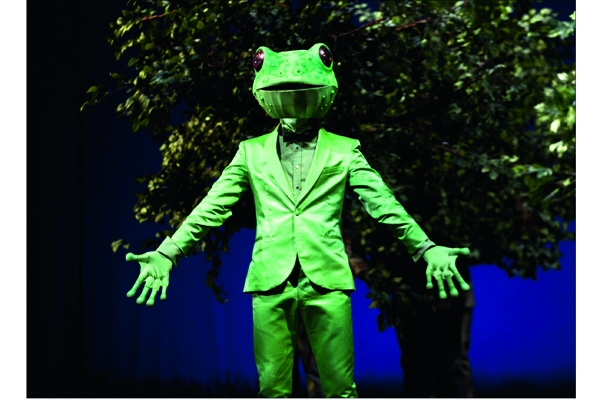Glyndebourne’s last offering this season is one of the most stylish things it has done for a very long time, Ravel’s two brief operas directed by Laurent Pelly, who was responsible for its brilliant Hänsel und Gretel in 2008. It may seem odd that Ravel’s pair — though they were conceived quite separately, and years apart — don’t get done more often, but they both demand elaborate sets, and would just be boring if not unintelligible without them.
Actually, I find L’heure espagnole, first performed in 1911, boring anyway, but that seems to be a minority view. The plot — a venerable one of an unsatisfied wife who looks forward to Thursday afternoons when her husband tends the town clocks and she is free to entertain lovers, but they turn out to be tiresome and incapable, while the silent muleteer fills the bill perfectly — is meant, in the text of Franc-Nohain, and the lubricious music of Ravel, to be good, fairly dirty fun. But the joke has dated badly. It belongs to a world in which the ladies retired after dinner while the men told risqué jokes, and thus to a world where it was taken for granted that women’s sexual needs are less imperious than men’s.
It used to be said that L’heure was misogynistic, but that is evidently false: there is one heartfelt passage in the score where Concepcion bursts out with frustration, ‘Oh! La pitoyable aventure!…Et je reste fidèle et pure’, brilliantly realised at Glyndebourne by Stéphanie d’Oustrac. Otherwise, for anyone who saw the opera a few years ago in Richard Jones’s production at the Royal Opera, and remembers the smouldering Christine Rice — especially the way she sang ‘Sans horloge’ when the penny finally dropped that the muscular muleteer was just what she had been looking for, and Christopher Maltman turned to the audience with a blissed-out expression, as he followed her up to her bedroom — Pelly’s cast and production, though certainly very good, lacked piquancy, and contained some annoying ‘comic’ overacting, particularly from Elliot Madore as Ramiro the muleteer.
The conductor is Kazushi Ono, employing such a light touch that Ravel’s orchestration, in any case restrained to a degree, almost evanesced out of existence. Claims are made in Rodney Milnes’s programme notes that this is the filthiest opera ever, not for those of delicate constitution, and so on, but at 45 minutes it strikes me as an agonisingly over-extended, one-poor-joke piece; and the funniest thing in Milnes’s note is his claim that ‘Ravel is an infinitely greater 20th-century composer than Debussy or Stravinsky.’
After the interval, which was longer than the two operas put together, we returned for L’enfant et les sortilèges, in a production so heavenly that I can think of nothing more perfect. This wonderful tale and text of Colette, about a naughty child who vents his boredom (clearly a major element in Ravel’s outlook) on anything he can find to smash, tear or wound, until the world comes to life and turns on him, then forgives him when he bandages the Squirrel’s hurt paw, has surely never been treated with such imagination and love as by Pelly, with the marvellous sets of Barbara De Limburg.
The Child is played with incredible vividness by Khatouna Gadelia, who manages to look exactly like an eight-year-old boy, and to move like one too. Much of the cast is taken over from L’heure, but here they have the chance to sing far superior music, and with the support of an orchestra doing things as magical and surprising as anything in Ravel’s oeuvre. What remains in the memory most, though, is the way that the sets come to life. The wallpaper that the Child rips in fury has painted pastoral scenes, and they become three-dimensional as the shepherds and shepherdesses round on him. The Teapot and Chinese Cup have already sprung to life on the immense table — the world is all seen through the Child’s eyes — with a more dextrous innuendo than anything in L’heure when the Teapot pours some tea into the cup.
The apogee of comic terror is the arrival of Arithmetic, alarmingly embodied in François Piolino, reeling off his list of absurd examples, which I’m sure nonetheless created unease in other members of the audience besides me. When the scene moves from the room to the garden, the atmosphere intensifies and we have a scene worthy of Janacek, the creatures both beautiful and fearsome. I felt that more could be made of the brief erotic scene between the Black and the White Cats, but the crucial quality of that whole part of the score, in which the Child realises how happy the creatures are and how they hate him for having tormented them, comes across exactly. I can only repeat that you will never see an opera as ideally produced and performed as this.






Comments